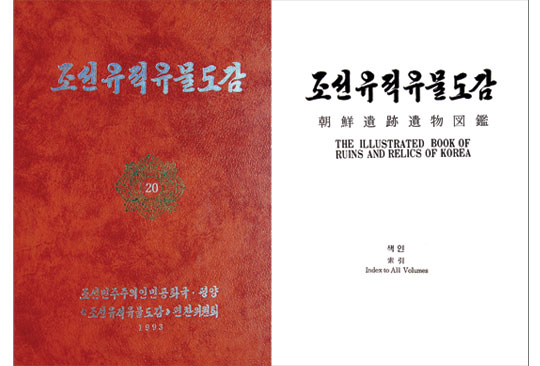For the publication of The Illustrated Book of Ruins and Relics of Korea
The Illustrated Book of Ruins and Relics of Korea is an encyclopedic illustrated book of Korean history which is worth a national treasure. In the book 1,303 ruins and about 10,000 relics, which were handed down for more than one million years from the primitive ages to the late period of the feudal Joson dynasty, were selected and introduced. There are explanations in Korean, English and Japanese and 9,948 photos and 2,254 measured drawings are included.
The Illustrated Book of Ruins and Relics of Korea of 20 volumes were edited for 14 years from Juche 72 (1983) to Juche 85 (1996) and there was an impressive story in publishing it.
Chairman
When the editors were having difficulty in the arrangement of ruins and relics, determination of the age and translation, he gave wise instructions that the book should be edited according to the historical period and the type. He also instructed that the age of castles should be determined of its first building and rebuilt buildings should be included to the corresponding volume on the basis of the period (age) of architectural style of the building. He instructed that the explanation should be written in Korean and only the necessary parts should be translated in English and other languages.
In the autumn of Juche 72 (1983), when the editors wanted to combine aerial photos of the ruins, the Chairman took measures to provide airplanes for taking photographs and took all the necessary measures so that they could go all around the country and take photos of the ruins freely.
The Chairman conducted step by step the matters including the scale and structure of the book, editorial principles and contents, translation and binding, materials, equipment and fund.
When the publication of the book had fallen into stagnation due to the mistakes and deviation of the editorial team, the Chairman sent a strong guidance group and took wise measures. He also sent valuable foreign reference books and a number of modern equipment.
Thus The Illustrated Book of Ruins and Relics of Korea was published under the prominent and wise leadership of the Chairman, a personage of patriotism who exerted himself for finding the true image of our national history and for glorifying it in the eyes of the world.
Soon after the publication and distribution of The Illustrated Book of Ruins and Relics of Korea, all the nations of the world gave unstinted praises on the time-honoured history and glorious culture of Korean nation.
